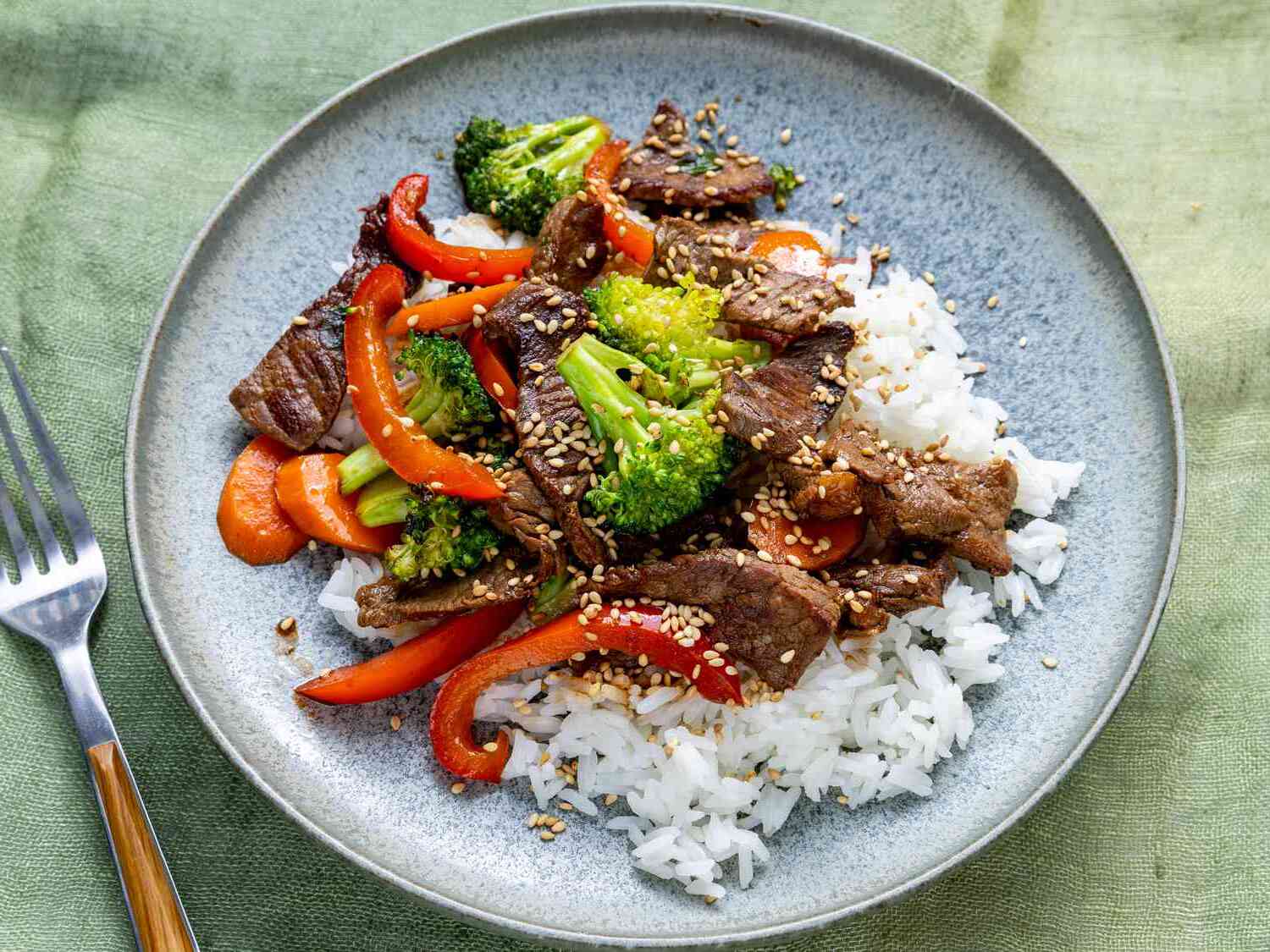
Stir-fries are a delicious and versatile way to enjoy a variety of ingredients in one dish. Originating from China, this cooking method has spread worldwide, becoming a favorite for many. Why are stir-fries so popular? They are quick to prepare, allowing you to whip up a nutritious meal in minutes. The high heat used in stir-frying helps to retain the vibrant colors and nutrients of vegetables, making them not only tasty but also healthy. Plus, you can customize your stir-fry with different proteins, vegetables, and sauces to suit your taste. Whether you're a busy professional or a home cook looking for a simple yet satisfying dish, stir-fries offer endless possibilities. Let's dive into 40 fascinating facts about this beloved culinary technique!
Key Takeaways:
- Stir-frying is a quick and healthy cooking method that originated in China over 2,000 years ago. It retains nutrients, requires minimal oil, and offers endless flavor combinations.
- From Kung Pao Chicken to Pad Thai, stir-frying is a versatile technique used in beloved dishes worldwide. It's a fun and delicious way to explore different cuisines and flavors.
What is a Stir-Fry?
Stir-frying is a popular cooking technique originating from China. It involves cooking ingredients quickly over high heat while stirring constantly. This method preserves the flavor, color, and texture of the food.
- Stir-frying dates back over 2,000 years to the Han Dynasty in China.
- The term "stir-fry" was first introduced to English speakers by Buwei Yang Chao in her 1945 book "How to Cook and Eat in Chinese."
- Traditional stir-frying uses a wok, a versatile round-bottomed cooking vessel.
- Stir-frying is known for its health benefits, as it requires minimal oil and retains nutrients in vegetables.
- The high heat used in stir-frying caramelizes sugars and browns proteins, enhancing the dish's flavor.
Ingredients Commonly Used in Stir-Fries
Stir-fries are incredibly versatile and can include a wide range of ingredients. Here are some common ones you might find.
- Vegetables like bell peppers, broccoli, and snap peas are staples in many stir-fries.
- Proteins such as chicken, beef, shrimp, and tofu are often used.
- Aromatics like garlic, ginger, and scallions add depth to the dish.
- Soy sauce is a key seasoning, providing a salty and umami flavor.
- Sesame oil is frequently used for its nutty aroma and taste.
Techniques for Perfect Stir-Frying
Mastering the art of stir-frying involves a few key techniques. These tips can help you achieve restaurant-quality results at home.
- Preheat the wok before adding any ingredients to ensure even cooking.
- Cut ingredients into uniform sizes for consistent cooking times.
- Cook proteins first, then remove them from the wok before adding vegetables.
- Add vegetables in stages, starting with the ones that take the longest to cook.
- Keep the ingredients moving constantly to prevent burning and ensure even cooking.
Health Benefits of Stir-Frying
Stir-frying is not just delicious; it's also a healthy way to prepare meals. Here are some reasons why.
- Minimal oil is required, reducing the overall fat content of the dish.
- High heat cooking helps retain the nutrients in vegetables.
- Stir-frying encourages the use of fresh, whole ingredients.
- The quick cooking time preserves the natural flavors and textures of the food.
- It allows for a balanced meal with a good mix of protein, vegetables, and healthy fats.
Popular Stir-Fry Dishes
Stir-frying is a technique used in many beloved dishes around the world. Here are some you might recognize.
- Kung Pao Chicken is a spicy, tangy dish featuring chicken, peanuts, and vegetables.
- Beef and Broccoli is a classic combination of tender beef and crisp broccoli in a savory sauce.
- Pad Thai is a famous Thai dish made with stir-fried rice noodles, shrimp, tofu, and peanuts.
- Chow Mein consists of stir-fried noodles with vegetables and a choice of protein.
- Cashew Chicken combines chicken, cashews, and vegetables in a flavorful sauce.
Stir-Frying Around the World
While stir-frying originated in China, it has been adopted and adapted by many cultures. Here are some examples.
- In Japan, stir-frying is known as "itame," and dishes like Yakisoba are popular.
- Korean stir-frying includes dishes like Japchae, made with sweet potato noodles.
- Thai cuisine features numerous stir-fried dishes, including the famous Pad See Ew.
- In Vietnam, stir-frying is used in dishes like Bò Lúc Lắc, or "shaking beef."
- Filipino cuisine includes stir-fried dishes like Pancit, a noodle-based dish.
Tips for Stir-Frying Success
Achieving the perfect stir-fry can be a bit of an art. Here are some tips to help you get it right every time.
- Use a high smoke point oil like peanut or canola oil.
- Make sure all ingredients are prepped and ready before you start cooking.
- Avoid overcrowding the wok to ensure even cooking.
- Use a metal spatula to easily toss and turn ingredients.
- Experiment with different sauces and seasonings to find your favorite flavor combinations.
Fun Facts About Stir-Frying
Stir-frying has some interesting trivia associated with it. Here are a few fun facts.
- The word "wok" comes from the Cantonese word for "cooking pot."
- Stir-frying is considered one of the healthiest cooking methods.
- A well-seasoned wok can become non-stick over time.
- Stir-frying is a quick cooking method, often taking less than 10 minutes.
- The technique has inspired many fusion dishes, blending flavors from different cuisines.
Stir-Fry Secrets Revealed
Stir-fries are more than just a quick meal. They offer a world of flavors, textures, and nutritional benefits. From the sizzling sound of veggies hitting a hot wok to the vibrant colors that make your plate pop, stir-fries are a feast for the senses. They’re versatile, allowing you to mix and match ingredients based on what’s in your fridge or what you’re craving. Plus, they’re a great way to use up leftovers and reduce food waste. Whether you’re a seasoned chef or a kitchen newbie, mastering the art of stir-frying can elevate your cooking game. So grab your wok, pick your favorite ingredients, and get ready to enjoy a delicious, healthy meal in minutes. Stir-fries truly are a culinary gem that everyone should have in their cooking repertoire. Happy cooking!
Frequently Asked Questions
Was this page helpful?
Our commitment to delivering trustworthy and engaging content is at the heart of what we do. Each fact on our site is contributed by real users like you, bringing a wealth of diverse insights and information. To ensure the highest standards of accuracy and reliability, our dedicated editors meticulously review each submission. This process guarantees that the facts we share are not only fascinating but also credible. Trust in our commitment to quality and authenticity as you explore and learn with us.


